Volunteer Gliding Squadron
 |
| Royal Air Force air component of the British Armed Forces |
|---|
| Components |
| History |
|
|
| Aircraft |
| Structure |
| Personnel |
Volunteer Gliding Squadrons (VGSs) are Royal Air Force Flying Training (FT) units, operating military Viking TX.1 (conventional) and Vigilant T.1 (motor) gliders to train cadets from the Air Training Corps and the RAF section of the Combined Cadet Force.
The VGSs now operate under the newly reformed 2 FTS,[1] within No.22 (Training) Group of the Royal Air Force Air Command. The 25 Units, along with the Royal Air Force Central Gliding School, are standardised annually by the Royal Air Force Central Flying School. Formerly under the Air Cadet Organisation prior to 2010, Headquarters Air Cadets presently still retains administrative support.
VGSs are made up of volunteer staff. Each is headed by a Commanding Officer and several executives, all of whom are commissioned into the Training Branch of the Royal Air Force Volunteer Reserve. Instructors comprise a mixture of regular RAF/RN/Army personnel, Reservists, Civilian Gliding Instructors (CGIs) and Flight Staff Cadets (FSCs).
Brief history
Preface
Gliding was first introduced for the Air Defence Cadet Corps in 1939, but formally became part of official training with the Air Training Corps in 1942. From 1946, 87 Gliding Schools (GSs) came under the Reserve Command.
Command
Initially the gliding schools were established under RAF Reserve Command (later to become RAF Home Command). In 1955, RAF Flying Training Command took over the responsibility and amalgamated them into 27 gliding schools under Headquarters Air Cadets. At the same time the gliding schools were renumbered with three-digit numbers, the first two digits being the parent Home Command Group (Nos. 61, 62, 63, 64, 66 or 67).[2] In 1968, RAF Training Command was established, incorporating Flying Training Command. In 1977, Training Command was absorbed into RAF Support Command, and then moved into Personnel and Training Command on its establishment in 1994 before being subsumed into Air Command in March 2007, where the gliding schools rest today.
Under Air Command, the chain of command for these units are regulated through No.22 (Training) Group RAF. On behalf of Air Officer Commanding No.22 (Training) Group RAF, the Volunteer Gliding Squadrons and the Central Gliding School are the collective responsibility of the Officer commanding No. 2 Flying Training School RAF.
Formation of the Central Gliding School (CGS)
Formulated in 1946, the Home Command Gliding Instructors School (HCGIS) was established in 1949 at RAF Detling to train Qualified Gliding Instructors for the gliding schools. With the disestablishment of Home Command, HCGIS was split into two Gliding Centres to accommodate the gliding schools in the north and south of the UK. A further reorganisation amalgamated the Gliding Centres into the Central Gliding School in 1972 at RAF Spitalgate, where it renamed the Air Cadet Central Gliding School (ACCGS) in 1974. In 2009, following the formal approval of the CGS unit badge, the Air Cadet Central Gliding School was renamed the Royal Air Force Central Gliding School and in 2010 restructured under No.1 Elementary Flying Training School.
The CGS is commanded by a Wing Commander RAF, who also acts as OC Flying for RAF Syerston. The Chief Instructor is a Squadron Leader RAF. The examiners of the CGS, are Flight Lieutenant RAFR and Squadron Leader RAFR officers, however all future appointments shall be RAFVR(T) commissions.
From wood to GRP
The RAF chose to re-equip the ageing fleet with the first of the modern GRP gliders. In order to achieve this, in 1983 the RAF acquired an initial batch of 10 Schleicher ASK 21 named Vanguard TX.1. The first examples were delivered to the ACCGS at Syerston in time for the new Instructors' courses to take place. The first VGS to equip with these was 618 VGS at RAF West Malling. Instructors from this unit were converted to the new training syllabus and flying the type during July and August of that year. The first Vanguard TX.1s were delivered to West Malling in July 1983 and training for Cadets began in August.
After the initial 10 were delivered Alexander Schleicher was unwilling to open a production line for the MoD, as they did not want to sideline their civilian market. A tender was issued and Grob Aerospace was awarded the contract to supply 100 Grob G 103 Twin II Acro Gliders. The Royal Air Force named the military variant as the Viking TX.1 in Air Cadet service. A single specimen was delivered to Slingsby Aviation in the UK for fatigue life testing.
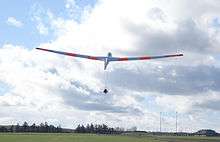 Royal Air Force Viking TX.1 takes off at RM Condor, Scotland
Royal Air Force Viking TX.1 takes off at RM Condor, Scotland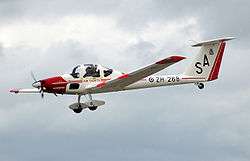
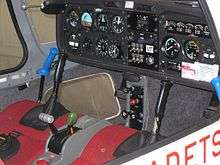 Vigilant T.1 Cockpit
Vigilant T.1 Cockpit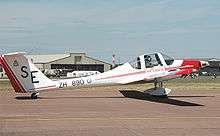 Vigilant T.1 at the 2010 Royal International Air Tattoo, RAF Fairford, Gloucestershire
Vigilant T.1 at the 2010 Royal International Air Tattoo, RAF Fairford, Gloucestershire- Vigilant T.1 at Farnborough Airfield during the 2008 Farnborough Airshow
Introduction of motor gliders
The Venture T.1 was trialled at the ACCGS at RAF Spitalgate in 1971/73. 10 GSs were first issued with the T.1 variant in 1977, but were quickly upgraded with the TX.2. With the development of many sites and closures of many RAF aerodromes put strain on many conventional VGS. Further GSs were allocated with the TX.2s. In 1991 the Venture TX.2 was replaced with the Vigilant T.1. Originally designated the Vigilant TX.1, the glider designation 'X' was dropped due to its change of role. The number of VGSs now operating Viking TX.1 to Vigilant T.1 are 11:17.
Disbandment of the competition fleet
In 2000, ACO-COS Group Captain Mike Cross announced the sale of the Valiant TX.1 and Kestrel TX.1 fleets. This concluded the RAF's many successful years competing in national gliding competitions and setting world records.
Schools to squadrons
Initially established as Gliding Schools, the GSs were re-designated Volunteer Gliding Schools (VGSs) in 1978. In 2005, following a decision by the Royal Air Force Board, the VGSs were renamed Volunteer Gliding Squadrons, keeping their VGS abbreviation.
Air Cadets to Royal Air Force
Following the restructure in 2005, a further reorganisation was initiated in 2010 by AOC 22 Group RAF. On 1 April 2010, Command and Control together with the responsibility for supervision and regulation of the Central Gliding School and 27 Volunteer Gliding Squadrons was moved from the Air Cadet Organisation to the Directorate of Flying Training under No 1 Elementary Flying School (No.1 EFTS). A further restructure in December 2011 saw No.1 EFTS absorbed into No.3 Flying Training School, together with a Gliding branch of the School developed from No.1 EFTS.
Extended pause and reinvention
In April 2014 all Air Cadet Organisation gliding was paused due to airworthiness concerns. In March 2016 a major restructuring of Air Cadet Gliding and Flying was announced,[3] resulting in the disbanding of 14 VGS', significant reduction of the Vigilant, a regional focus of remaining Viking squadrons, and an increase in Tutor flying. With the introduction of the Prefect, the Tutor replacement under the UK Military Flying Training System, it is anticipated Tutors currently used on Elementary Flying Training for military aircrew will cascade back to Air Experience operations. The Vigilant will be completely withdrawn from service in 2019, and some current Vigilant aircrew will transfer to the increased Tutor fleet, from which two new AEF squadrons will be formed.
A review of the Defence Estate, published in November 2016, confirmed the disbandments announced in March and gave estimated dates for disposal of several sites.[4]
Units
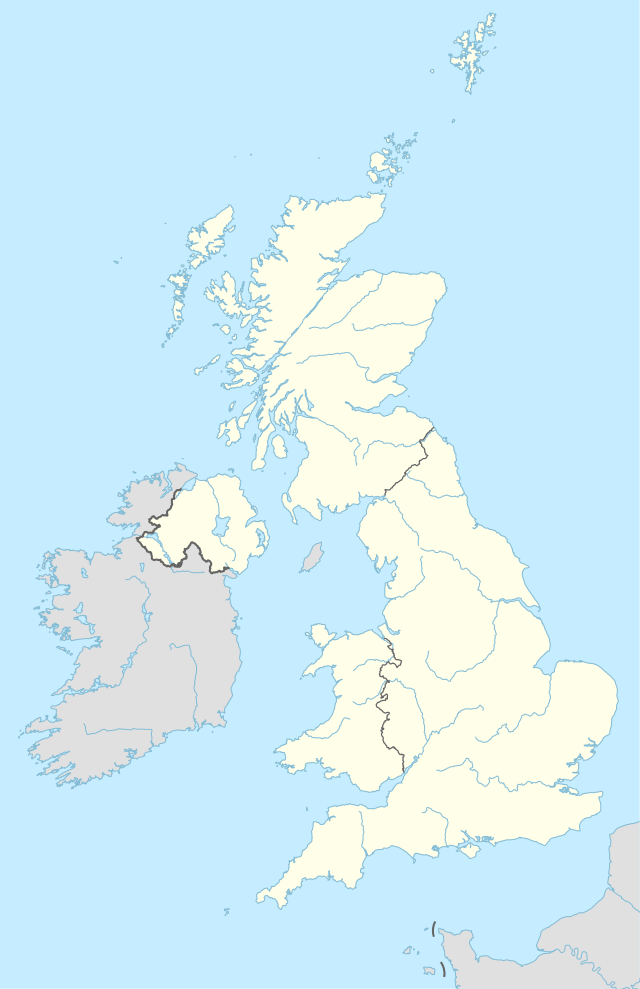
Present conventional glider VGSs
- 614 VGS (MDPGA Wethersfield), formerly 142 GS, 146 GS and 147 GS
- 615 VGS (RAF Kenley), formerly 141 GS and 168 GS
- 621 VGS (Hullavington), formerly 83 GS, 87 GS and formerly at Locking Airfield W-S-M
- 622 VGS (Trenchard Lines), formerly 89 GS
- 626 VGS (Predannack), formerly 82 GS
- 644 VGS (RAF Syerston), formerly 29 EGS
- 661 VGS (RAF Kirknewton), formerly 1 EGS
- 662 VGS (RM Condor), formerly 2 GS and 5 GS - closure announced on 10 Mar 2016
Disbanded conventional glider VGSs
- 623 VGS ( RAF Tangmere )
- 625 VGS (Hullavington), formerly 83 GS (amalgamated with 621 VGS 1 Aug 13)
- 643 VGS (RAF Syerston), formerly 107 EGS (amalgamated with 644 VGS 1 Aug 13)
- 617 VGS Currently homeless (formerly at RAF Manston and before that at RAF Hendon)
Present motor glider VGSs
- 611 VGS (RAF Honington), formerly 102 GS -
- 612 VGS (Dalton Barracks), formerly 104 GS - closure announced on 10 Mar 2016
- 613 VGS (RAF Halton), formerly C122 GS - closure announced on 10 Mar 2016
- 616 VGS (RAF Henlow), formerly 106 GS - closure announced on 10 Mar 2016
- 618 VGS (RAF Odiham), formerly 146 GS and 168 GS - closure announced on 10 Mar 2016
- 624 VGS (RMB Chivenor), formerly 84 GS - closure announced on 10 Mar 2016
- 631 VGS (RAF Woodvale), formerly 186 GS
- 632 VGS (RAF Ternhill), formerly 45 GS
- 633 VGS (RAF Cosford) - closure announced on 10 Mar 2016
- 634 VGS (MOD St. Athan), formerly 68 GS - closure announced on 10 Mar 2016
- 635 VGS (RAF Topcliffe) (Formerly at BAE Samlesbury) - closure announced on 10 Mar 2016
- 636 VGS (Swansea Airport) - closure announced on 10 Mar 2016
- 637 VGS (RAF Little Rissington)
- 642 VGS (RAF Linton-on-Ouse), formerly 23 GS - closure announced on 10 Mar 2016
- 645 VGS (RAF Topcliffe), formerly 26 GS
- 663 VGS (RAF Kinloss) - closure announced on 10 Mar 2016
- 664 VGS (Newtownards) - closure announced on 10 Mar 2016
Central Flying School
- HQ, No. 2 Flying Training School RAF (RAF Syerston)
- Central Gliding School (RAF Syerston)
Volunteer Gliding Squadron structure
Personnel
Staff on a VGS consist of part-time personnel (usually specifically appointed Reserve Officers and Civilians), supernumerary personnel (who are regular members of the Armed Forces, or Reservists attached to the Cadet Force or Auxiliaries), and Flight Staff Cadets.
Appointed personnel
Reserve Officers are appointed to fulfil management positions mandated to operate a Squadron. Civilians start under probation as Under Training Instructors. Their probation ends on attaining a B2 Category Qualified Gliding Instructor (QGI) status, where they become Honorary Instructors of the RAF. Personnel must attain a B1 Category QGI rating before qualifying for a Reserve Commission for an intended appointment. Executive Officers (XOs) head the leadership of the Squadron as OC, CFI and DCFI.
Commissioned posts on VGS include:
- Officer Commanding (OC) in the rank of Squadron Leader
- Chief Flying Instructor (CFI) in the rank of Flight Lieutenant
- Technical Officer (TechO) in the rank of Flight Lieutenant
- Adjutant in the rank of Flight Lieutenant
- Equipment Officer
Other appointed roles include:
- Unit Navigation Officer (UNavO)
- Mechanical Transport Officer (MTO)
- Flight Safety Officer (FSO)
- Training Officer (TrgO)
Supernumerary personnel
Supernumerary personnel are part-time staff whose primary appointment is elsewhere and their VGS appointment is their secondary duty. Personnel vary from various Commissioned and Non-Commissioned branches of the Regular, Reserve and Cadet Forces.
Flight Staff Cadets
Air Cadets from either the Combined Cadet Force or Air Training Corps can be appointed as Flight Staff Cadets (FSCs) on a VGS. FSCs are selected, usually after completing Advanced Glider Training, for those who show potential to become Gliding Instructors. They do not act as a substitute for VGS adult personnel solely providing ground support. FSCs can progress to a B-Category (less the supervisory privileges).
Flying training
Flying Training is carried out to the syllabus of the RAF Central Flying School. Ab-initio training starts with three initial courses, and are followed on with Basic Pilot Training to achieve flying Grades.
- Gliding Induction Courses (GICs) - these are 20 - 30 minute sorties designed to give a basic appreciation of aircraft handling.
- Gliding Scholarship (GS) - is an 8-hour course to flying either aircraft types solo. An additional 2 hours can be awarded to achieve the course aim. Trainees attain the aircrew training standard GS. Two sets of Wings can be awarded to Air Cadets; Blue for completing the GS Syllabus to the required ATS, and Silver for flying a solo circuit.
- Advanced Gliding Training (AGT) - a short 5 hour course to provide a greater appreciation of advanced handling and five additional solo circuits. Trainees attain the aircrew training standard AGT. Air Cadets completing this course are awarded Gold Wings.
Flying qualifications
The following Pilot qualifications can be obtained on VGSs:
- Pilot Grade 2 (G2) - Qualified Solo on aircraft type.
- Pilot Grade 1 (G1) - Qualified on aircraft type, allowing with passengers to be flown. G1s are additionally authorised to teach GIC exercises, to provide handling experience required for an Instructor category.
Instructor qualifications can be attained following the completion of a course at the Royal Air Force Central Gliding School:
- B2 Category Instructor - A Qualified Gliding Instructor that requires close supervision.
- B1 Category Instructor - A competent Qualified Gliding Instructor.
Higher instructor qualifications can be attained following the completion of an examination by the Royal Air Force Central Flying School Gliding Examiners:
- A2 Category Instructor - An above average Qualified Gliding Instructor. This qualification is denoted by the symbol cfs(g) in the Air Force List for commissioned instructors.
- A1 Category Instructor - An exceptional Qualified Gliding Instructor. This qualification is denoted by the symbol cfs*(g) in the Air Force List for commissioned instructors.
Additional ratings:
- Flying Supervisor (FS) for the roles of OC, CFI and DCFI. This is notated by a * after the category, e.g. "A2*".
- Navigation Instructor Qualification (NIQ) for teaching instructors to award TQs and BNQs.
- Transit Qualification (TQ) for ferry flying
- Basic Navigation Qualification (BNQ) for teaching navigation.
Aircraft
Conventional gliders
In service
- Grob Aerospace Viking TX.1 (100 entered service, later reduced to around 77)
No longer in service
Non-GRP construction
Single-seat
- BAC BAC TX.1 (1 entered service)
- Slingsby Cadet TX.1 (362 entered service)
- Slingsby Cadet TX.2 (69 entered service)
- Slingsby Grasshopper TX.1 (115 entered service)
- Slingsby Gull TX.1 (one entered service)
- Slingsby Kite TX.1 (one entered service)
- Slingsby King Kite TX.1 (one entered service)
- Slingsby Prefect TX.1 (15 entered service)
- Slingsby Primary TX.1 (31 entered service)
- Slingsby Swallow TX.1 (5 entered service)
Dual-seat
- Slingsby Cadet TX.3 (126 entered service)
- Slingsby Falcon TX.3 (7 entered service)
- Slingsby Sedbergh TX.1 (95 entered service)
GRP construction
Single-seat
- Schleicher Valiant TX.1 (5 entered service)
Dual-seat
- Schleicher Vanguard TX.1 (10 entered service)
- Schempp-Hirth Kestrel TX.1 (2 entered service)
Motor gliders
In service
- Grob Aerospace Vigilant T.1 (53 entered service, later increased to 63)
No longer in service
- Slingsby Venture TX.1 (One entered service, mainly used at ACCGS)
- Slingsby Venture TX.2 (15 entered service, followed by a further 25)
See also
References
- ↑ No.2 Flying Training School reformed
- ↑ 661, 662, 663 and 664 VGS - History
- ↑ Written response to parliamentary questions 10 Mar 2016
- ↑ "A Better Defence Estate" (PDF). Ministry of Defence. November 2016. pp. 15, 28, 29. Retrieved 9 November 2016.
External links
| Wikimedia Commons has media related to Royal Air Force. |
| Wikimedia Commons has media related to Aircraft of the air force of the United Kingdom. |
Volunteer Gliding Squadrons
- 611 Volunteer Gliding Squadron
- 612 Volunteer Gliding Squadron
- 614 Volunteer Gliding Squadron
- 615 Volunteer Gliding Squadron
- 616 Volunteer Gliding Squadron
- 618 Volunteer Gliding Squadron
- 621 Volunteer Gliding Squadron
- 622 Volunteer Gliding Squadron
- 624 Volunteer Gliding Squadron
- 626 Volunteer Gliding Squadron
- 631 Volunteer Gliding Squadron
- 633 Volunteer Gliding Squadron
- 634 Volunteer Gliding Squadron
- 635 Volunteer Gliding Squadron
- 636 Volunteer Gliding Squadron
- 637 Volunteer Gliding Squadron
- 642 Volunteer Gliding Squadron
- 644 Volunteer Gliding Squadron
- 645 Volunteer Gliding Squadron
- 661 Volunteer Gliding Squadron
- 662 Volunteer Gliding Squadron
- 663 Volunteer Gliding Squadron
- 664 Volunteer Gliding Squadron